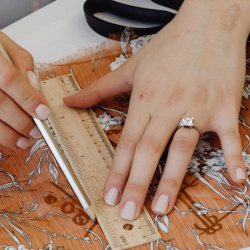📘 Table of Contents
- Photography Resume: How to Create a Winning Resume for Photographers
- Photography Resume for Freshers: Tips & Examples
- Photography Resume for Beginners: Common Mistakes to Avoid
- Key Skills to Add in a Photography Resume
- Design & Formatting Tips for a Professional Photographer Resume
- Conclusion: Building a Photography Resume That Stands Out
- FAQs
- What should be included in a photography resume?
- How to make a photography resume step by step?
- How can freshers write a photography resume without experience?
- What is the difference between a photography resume for freshers and beginners?
- What are the most important skills to highlight in a photographer resume?
- Should I include a portfolio link in my photography resume?
- What are common mistakes to avoid in a photography resume?
- How do I make my photography resume stand out to employers?
What Is a Photography Resume?
A Photography Resume is a professional document that showcases your skills, experience, and achievements in photography. It outlines your expertise in various photography styles—such as portrait, fashion, wildlife, or product photography—and highlights your technical abilities with equipment, editing software, and creative composition. Unlike generic resumes, a photography-focused one emphasizes your visual storytelling ability and artistic approach. It should include a mix of creative achievements, client projects, and measurable results, giving employers a clear idea of your capabilities behind the lens. Additionally, remember that a formal resume is also needed to submit to institutions or organizations.Why a Strong Photography Resume Matters for Your Career
In today’s crazy world of photography, having a good resume can really help you stand out. Whether you’re trying to work with a brand, a studio, or a magazine, your Photography Resume is like your way of saying, “Hey, I’m serious about this!” It shows that you’ve got the passion, the skills, and the vibe to match. It’s not just about listing what you’ve done; instead, it’s about showing who you are as a photographer and why people should notice your work. A well-structured resume:- Highlights your creative journey and specializations.
- Builds trust with potential employers or clients.
- Demonstrates your experience in managing shoots, editing, and delivering quality work.
- Complements your portfolio by summarizing your strengths and career achievements.
How to Make a Photography Resume Step by Step
Creating a Photography Resume involves more than listing your experience—it’s about presenting your creativity and professionalism clearly. Let’s break it down step by step.Choosing the Right Resume Format
Select a resume format that best suits your level of experience.- Chronological Format – Ideal for experienced photographers with a steady work history.
- Functional Format – Perfect for a photography resume for beginners who want to highlight skills over experience.
- Combination Format – Balances both skills and experience for a well-rounded presentation.
Writing a Professional Summary or Objective
Your summary is the first impression. For example: “Creative and detail-oriented photographer with 3+ years of experience in portrait and product photography, skilled in Lightroom and Photoshop, and passionate about visual storytelling.” For a photography resume for freshers, replace experience with education, passion, and learning goals. Example: “Aspiring photographer with a keen eye for composition and color, seeking to develop professional experience through creative projects and collaborations.”Showcasing Photography Skills & Expertise
Use bullet points to make your resume easy to scan and impactful.- Highlight both your technical and creative skills. Examples include:
- Camera operation (DSLR, mirrorless systems)
- Lighting techniques (natural and artificial)
- Editing software (Adobe Photoshop, Lightroom, Capture One)
- Retouching and color correction
- Concept development and art direction
Highlighting Work Experience & Projects Along with Portfolio
For a photographer, work experience and projects are important. Not just that, but a portfolio must be updated. For the person who is new to this field and just starting out their career, he/she should have a portfolio. To nail this, you can use Canva and other free hosting sites to link your portfolio. Just keep these points in mind while making one:- Project title and client name (if applicable)
- Dates and brief descriptions of your role
- Results or recognition received (e.g., “Photographs published in XYZ Magazine”)
Adding Education, Certifications & Training
Include your formal education and any professional training that adds credibility. Example:- Diploma in Photography or Visual Arts
- Online certifications in lighting, composition, or post-production
- Workshops or masterclasses attended
Photography Resume for Freshers: Tips & Examples
A photography resume for freshers may not include years of experience, but it can still make a strong impression by focusing on potential, creativity, and initiative.
How Beginners Can Highlight Skills Without Experience
Focus on transferable skills such as creativity, teamwork, attention to detail, and digital proficiency. Include classroom projects, personal shoots, or passion projects. Example:
- “Created a themed photo series on urban architecture.”
- “Assisted in campus events as an official photographer.”
Showcasing Internships, Volunteer Work & Personal Projects
Freshers can emphasize learning experiences and voluntary contributions:
- Interned with a wedding photography studio, assisting with lighting and editing.
- Volunteered for NGO campaigns to capture awareness events.
- Built a personal project titled ‘Everyday Faces’ featuring street portraits.
These examples demonstrate initiative and practical learning.
Photography Resume for Beginners: Common Mistakes to Avoid
Avoiding common errors can significantly improve your resume’s quality:
- Don’t overcrowd your resume with too many visuals or colors.
- Avoid generic job descriptions—be specific about achievements.
- Don’t forget to include updated contact information and portfolio links.
- Keep your resume concise—one page is ideal for beginners.
Remember, clarity and focus leave a stronger impression than clutter.
Key Skills to Add in a Photography Resume
Your Photography Resume should highlight both your technical expertise and your creative abilities. Employers and clients look for photographers who can balance artistic vision with professionalism and project management. Including the right skills not only strengthens your resume but also makes it more relevant to the specific role or niche you’re targeting.
Here are some of the most important skills to feature:
- Camera and Lighting Expertise: Show that you understand different camera types (DSLR, mirrorless, or film), lenses, and lighting setups—whether natural or studio-based. Mention your familiarity with tools like reflectors, strobes, and diffusers, as lighting is crucial to creating high-quality images.
- Image Composition and Editing: Strong composition skills demonstrate your understanding of framing, angles, and visual balance. Complement this with post-production knowledge—proficiency in software like Adobe Photoshop, Lightroom, or Capture One shows that you can refine images to perfection.
- Creative Direction and Visual Storytelling: Photography is about more than capturing moments—it’s about communicating a story. Employers appreciate photographers who can conceptualize shoots, plan creative themes, and direct models or clients effectively to achieve a cohesive visual outcome.
- Client Communication and Project Management: Successful photographers know how to work with clients, understand briefs, and deliver results on time. Highlight your experience managing shoots, coordinating with teams, or handling client feedback to showcase your professionalism.
- Time Management and Adaptability: The ability to handle multiple projects, meet deadlines, and adjust to changing environments is highly valued. Whether you’re shooting weddings, portraits, or commercial campaigns, being adaptable ensures smooth execution even under pressure.
- Attention to Detail and Technical Precision: From focus accuracy to color grading, attention to small details makes a big difference. It reflects your commitment to producing flawless, high-quality work.
Pro Tip: Customize your skills section based on the job description or project requirements. For example, a wedding photographer might highlight event coordination and candid photography, while a product photographer could focus on studio lighting and retouching expertise.
Design & Formatting Tips for a Professional Photographer Resume

The design of your resume is your first chance to display your sense of aesthetics—something every employer expects from a creative professional. A well-designed layout not only makes your resume visually appealing but also helps recruiters quickly navigate your skills and achievements. Here’s how to ensure your Photography Resume looks polished and professional:
- Use clean, legible fonts: Choose modern, easy-to-read fonts like Helvetica, Lato, or Calibri. Avoid overly decorative or script fonts that can make the document look cluttered. Keep font sizes consistent—use larger headings for sections and a standard readable size for text.
- Maintain proper spacing and structure: Balanced margins and clear section separations make your resume more scannable. Use white space strategically to create visual breathing room, ensuring the reader’s focus stays on your content.
- Keep the layout minimalist and modern: As a photographer, your creativity should shine through simplicity, not complexity. Stick to a one-page format unless you have extensive experience, and limit yourself to two colors that align with your personal or brand identity.
- Use subtle color accents and visual hierarchy: Incorporate soft color tones to highlight section headers or key details like job titles. This not only improves readability but also gives your resume a professional edge without being flashy.
- Include high-quality visual elements: Adding a small, professional headshot or a subtle logo watermark can make your resume more memorable. Just make sure it doesn’t overpower the content.
- Save and share in the right format: Always export your resume as a PDF to preserve formatting and ensure it looks consistent on all devices. You can also name the file professionally (e.g., YourName_PhotographyResume.pdf) before sharing.
A well-designed resume reflects your attention to detail and artistic sensibility—qualities that every potential client or employer values in a photographer.
Conclusion: Building a Photography Resume That Stands Out
A great Photography Resume does more than summarize your qualifications—it tells your story as a visual artist. By combining creativity with clarity, you can craft a document that reflects your passion and professionalism.
Whether you’re an experienced photographer or just starting out, focus on presenting your skills, achievements, and portfolio in the best light. With thoughtful structure, compelling examples, and a touch of creativity, your resume can truly open doors to exciting opportunities in the photography world.
FAQs
What should be included in a photography resume?
A photography resume should include your contact details, summary, skills, experience, education, and portfolio links.
How to make a photography resume step by step?
Choose a clean format, write a strong summary, highlight your skills, add experience, education, and a link to your portfolio.
How can freshers write a photography resume without experience
Freshers can focus on personal projects, internships, and volunteer work to showcase creativity and learning potential.
What is the difference between a photography resume for freshers and beginners?
Freshers are new graduates entering the field, while beginners may be self-taught photographers building experience.
What are the most important skills to highlight in a photographer resume?
Camera operation, lighting, editing software, creativity, and client communication are key.
Should I include a portfolio link in my photography resume?
Yes, always include your portfolio or website link—it’s crucial for employers to see your visual work.
What are common mistakes to avoid in a photography resume?
Avoid clutter, vague descriptions, spelling errors, and missing portfolio links.
How do I make my photography resume stand out to employers?
Customize your resume for each role, include measurable achievements, and ensure your portfolio reflects your best work.



















